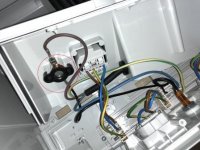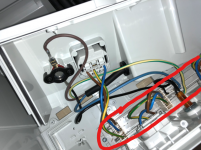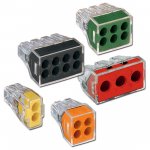So, in putting together a parts list for my 'DIY-sys-ph', I'm encountering difficulty finding what I would refer to as "busbars". I know that I could simply wire everything together with wire nuts and a rat's nest of wire but I like the clean look produced by a bus bar. Moreover, given the knocks and vibration a power distribution tool box would be subjected to, it just makes sense to follow the kinds of electrical connection practices that are employed in the stock SYS-PH.
Therefore, I figure I will either need one bus bar capable or handling all three functions (hot, neutral, ground) or three, one each for the hot, the neutral and the ground. Whatever it/they would look like, it/they would need to permit an adequate number of connection points for five outlets and an indicator light).
Looking at the guts of the SYS-PH (and also being familiar with the guts of a common 120V AC power strip) it's clear to me that each employs a similar looking busbar (or 'power distribution bar' or 'terminal block bus bar'?), the SYS-PH version of which is circled in red below:
[attachimg=1]
Pretty simple - the hot, neutral and ground wires plug into one end and take-offs emerge when necessary from the relevant bar to attach each outlet to the busbar.
The trouble is that no amount of searching produces anything that looks like it would be appropriate for a 120V 15A AC system.
I can find examples of busbars intended for DC systems - like overkill-quality bus bars for marine use (which look like what I imagine a bus bar should look like):
...and other less-beefy versions for automotive use as well as busbars intended for residential (though low-voltage) uses - like
this one - but I can't find anything that looks remotely like the busbar in the SYS-PH nor anything at all that looks like it would work for spreading ~1600W-2200W loads across five NEMA 5-15 outlets and a small 120V LED indicator light. At this point, I'm thinking that I am not using the proper terminology in my searches.
Any ideas?







